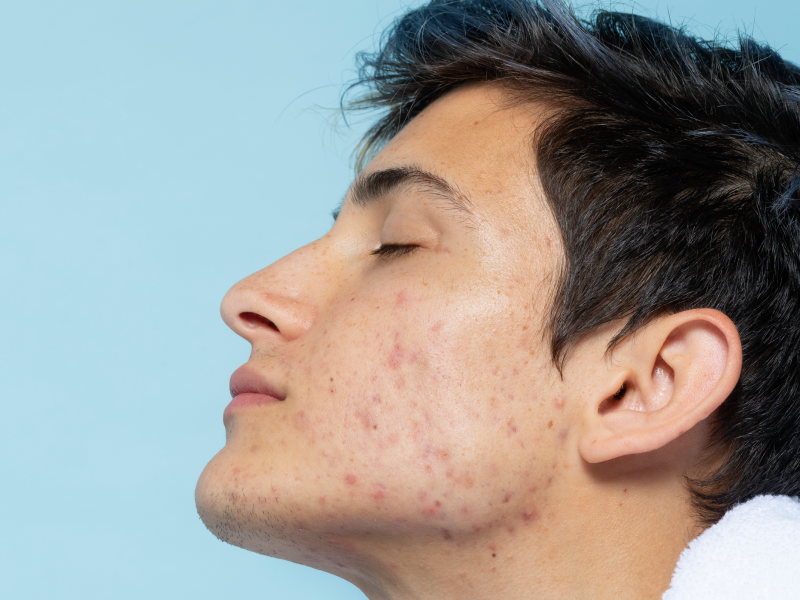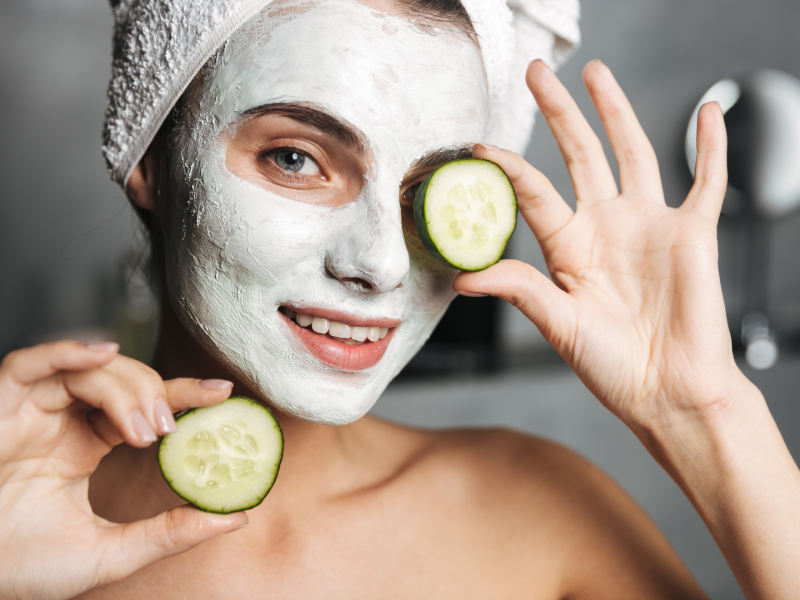Cystic acne is a skin condition that plagues many individuals, causing both physical discomfort and emotional distress. The deep, painful cysts that characterize cystic acne can be incredibly frustrating to deal with. In this comprehensive guide, we will delve into the world of cystic acne, exploring its causes, symptoms, and, most importantly, a range of effective strategies on how to get rid of cystic acne for good.
What is Cystic Acne?
Exploring the complexities of cystic acne indicates an intricate skin condition that necessitates a thorough understanding for effective treatment. This requires investigating the elements that contribute to its formation and progression, such as hormone imbalances, genetic predispositions, and inflammatory processes. Understanding these origins is essential for tailored treatment approaches, as it provides insights into prospective preventative strategies and improved management tactics. Furthermore, knowing the psychological impact of cystic acne on self-esteem and mental well-being contributes to a comprehensive strategy.
Cystic acne, distinguished by its painful, pus-filled cysts forming deep beneath the skin, extends beyond typical acne. Its profound nature, often resulting in scarring, stems from hormonal imbalances and genetics, rendering it more challenging to address compared to milder acne forms. Successful management and prevention involve a multifaceted approach involving topical treatments, oral medications, and lifestyle adjustments.

How Does Cystic Acne Develop?
Cystic acne is the result of a complex interplay of factors within the skin. Excess oil production, also known as sebum, can clog hair follicles, leading to the development of cysts. Acne-causing bacteria, specifically Propionibacterium acnes, thrive in these clogged follicles and contribute to inflammation. Hormones, particularly androgens, play a role in stimulating oil production, making teenagers and women more susceptible to cystic acne. Genetic predisposition, diet, and environmental factors also influence the development of this condition.
What Does Cystic Acne Look Like?
Cystic acne is not subtle in its appearance. The large, painful cysts can be red, swollen, and often elevated above the skin’s surface. They are more profound than regular pimples and are usually located deeper within the skin. The inflammation and tenderness associated with cystic acne can make it a particularly uncomfortable and distressing condition.
Taking Action: How to Get Rid of Cystic Acne
When it comes to tackling cystic acne head-on, a proactive approach is key. This section is dedicated to equipping you with a range of strategies to effectively manage and eliminate cystic acne.
Professional Treatment Options
When it comes to managing cystic acne effectively, seeking dermatological expertise becomes paramount. Dermatologists possess the knowledge and experience to tailor a comprehensive treatment plan that addresses individual skin needs:
- Dermatological Expertise: If you’re battling stubborn cystic acne, consulting a dermatologist is an essential first step. Dermatologists can evaluate the severity of your problem and provide treatment options that are unique to you. Prescription medications like oral antibiotics, hormonal therapies, and isotretinoin are potent tools that dermatologists might employ.
- Intralesional Corticosteroid Injections: For immediate relief from the pain and inflammation of cystic acne, corticosteroid injections are effective. These injections can shrink the cyst and reduce discomfort, helping you get back to feeling like yourself sooner.
For those in Canada, an innovative solution is at hand through RemoteDerm – an online dermatology consultation service. With RemoteDerm, individuals dealing with acne can access professional advice and online acne dermatology recommendations from certified dermatologists, all within the convenience of their homes. This service ensures that anyone across Canada can receive expert guidance on managing cystic acne within just 12 hours of seeking an online consultation, providing a timely and accessible resource for effective skincare management.

At-Home Care
In addition to seeking professional guidance, implementing a consistent at-home skincare routine plays a crucial role in managing cystic acne. By integrating gentle cleansing methods and targeted topical treatments, individuals can actively contribute to their skin’s improvement. Moreover, the use of warm compresses offers a soothing approach that aids in reducing inflammation and promoting the healing process for cystic acne lesions.
- Gentle Cleansing: Washing your face twice daily with a gentle, non-comedogenic cleanser helps maintain clean skin and prevent further irritation. Harsh scrubbing can exacerbate inflammation, so a delicate touch is crucial.
- Topical Treatments: Over-the-counter products containing ingredients like benzoyl peroxide, salicylic acid, or glycolic acid can aid in managing cystic acne. These treatments target bacteria and exfoliate the skin, reducing the risk of clogged follicles.
- Warm Compresses: Applying a warm, damp cloth to the affected area can help soothe inflammation and encourage the cyst to come to a head, facilitating drainage.
- Diet and Hydration: While diet alone won’t be a miracle cure, consuming a balanced diet rich in antioxidants, avoiding excessive dairy and sugar, and staying hydrated can contribute to healthier skin.
Lifestyle Practices
Beyond medical and at-home treatments, adopting certain lifestyle practices can further enhance the management of cystic acne. Prioritizing stress management techniques and cultivating healthy hygiene and skincare habits contribute to a holistic approach in achieving clearer and healthier skin.
- Stress Management: Chronic stress can exacerbate cystic acne. Incorporating stress-relieving activities such as meditation, yoga, and mindfulness can positively impact your skin’s health.
- Hygiene and Skincare Habits: Avoid touching your face frequently, as this can transfer bacteria and exacerbate inflammation. Use non-comedogenic, oil-free skincare products to minimize the risk of clogged pores.
Patience and Persistence

Managing cystic acne
Dealing with cystic acne demands patience and consistency. It’s important to understand that results may take time to manifest. Regularly following your chosen treatment regimen, whether through professional guidance or at-home care, is essential for achieving clearer skin and reducing the likelihood of future cystic acne outbreaks. In addition to following a treatment regimen, maintaining a healthy lifestyle can also contribute to managing cystic acne. Moreover, it’s important to avoid picking or popping cystic acne, as it can lead to further inflammation and scarring. Furthermore, incorporating gentle skincare practices and staying well-hydrated can further aid in soothing the skin and promoting the healing process for cystic acne.
Final Thoughts
In the battle against cystic acne, a multifaceted approach is the key to success. From understanding the underlying causes to exploring a range of treatment options, this comprehensive guide has provided invaluable insights to empower individuals in their journey toward clearer, healthier skin. Cystic acne’s physical and emotional impact is undeniable, but armed with knowledge and the right strategies, it’s possible to regain confidence and embrace a positive self-image.
Remember that conquering cystic acne is not an overnight endeavor. Patience and persistence are essential virtues throughout this process. As you embark on your skincare journey, keep in mind that everyone’s skin is unique, and what works for one person may differ for another. It’s crucial to consult with a dermatologist, whether in person or through online platforms like RemoteDerm, to create a tailored treatment plan that suits your individual needs.
Embrace the power of professional expertise, whether through dermatological guidance or online consultations, to make informed decisions about your skincare routine. Combine this with consistent at-home care, mindful lifestyle practices, and a dose of patience, and you’ll be well on your way to overcoming the challenges of cystic acne. By nurturing your skin and practicing self-care, you’re not only addressing a physical concern but also nurturing your overall well-being. With dedication and determination, the journey to conquering cystic acne can lead to newfound confidence and a healthier, happier you.
FAQs
- Is sunlight exposure helpful for cystic acne?
Limited sun exposure can have anti-inflammatory effects, but sun protection is essential to prevent skin damage.
- Can cystic acne be completely cured?
While complete cure is challenging, effective management can minimize outbreaks and improve skin health.
- Can cystic acne occur in adulthood?
Yes, cystic acne can persist or develop in adulthood, often due to hormonal fluctuations.
- How long does it take to see results from cystic acne treatments?
Results vary, but improvement may take weeks to months with consistent treatment and care.
- Is makeup safe to use with cystic acne?
Non-comedogenic, oil-free makeup products are safer options for those with cystic acne.
